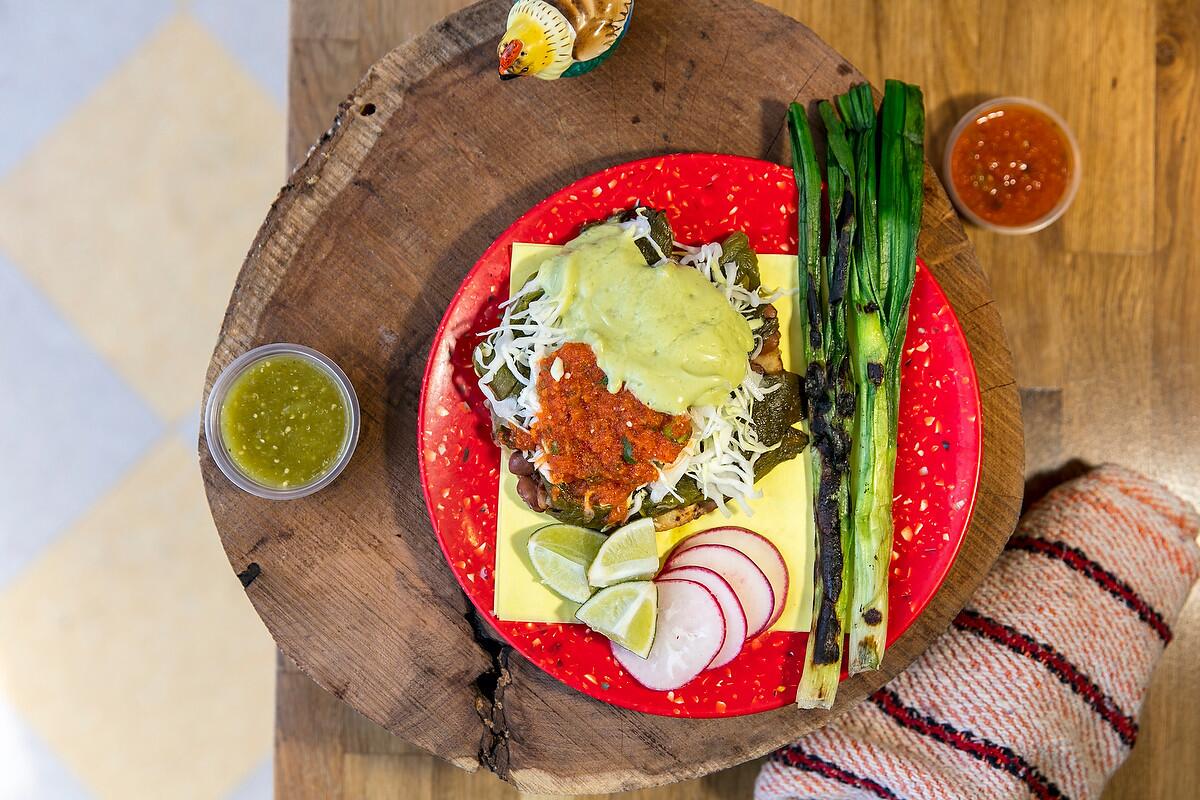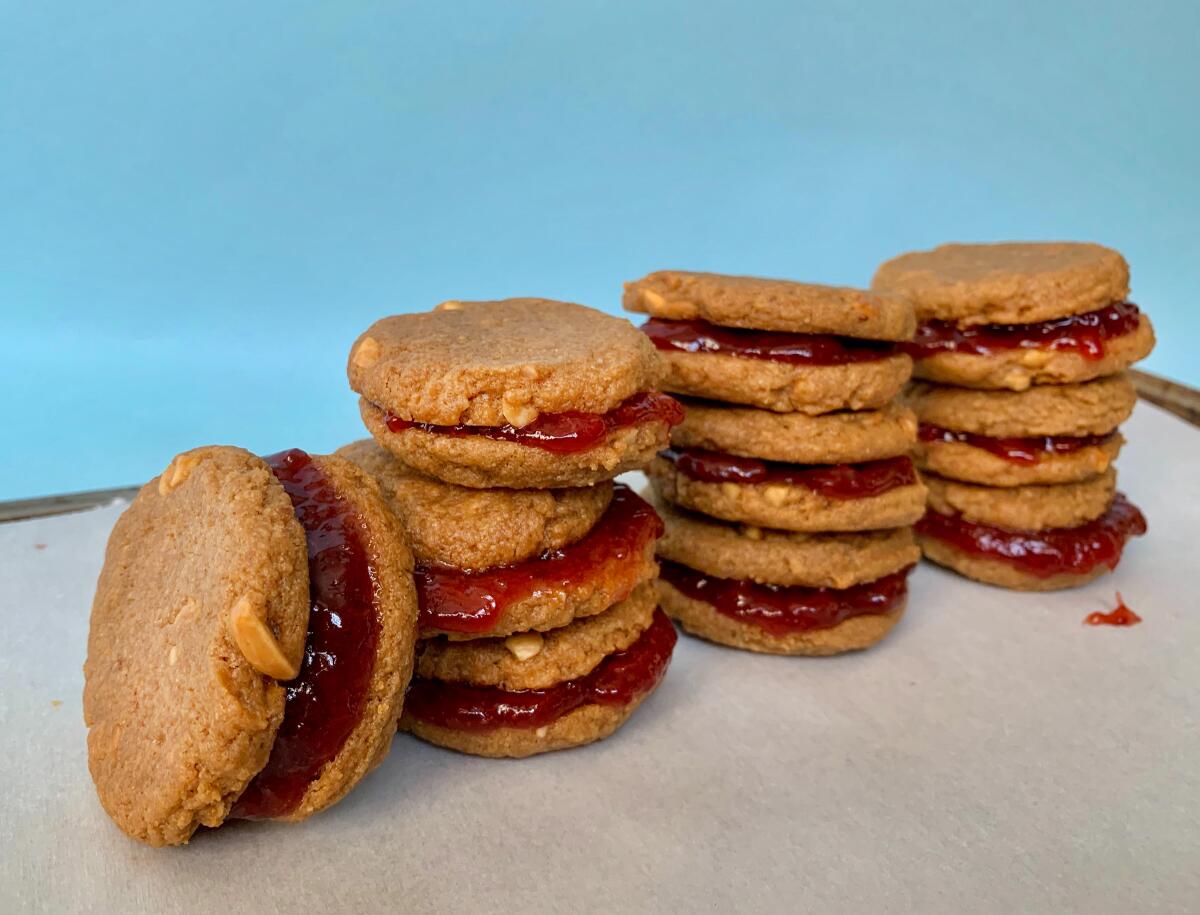L.A. Taco’s Javier Cabral on scouting for tacos in Mexico and reporting the pandemic
- Share via
In June, L.A. Taco editor Javier Cabral made one of the most nerve-racking editorial decisions of his career: He greenlit a story about the controversy surrounding Carnitas El Momo, a beloved L.A. taqueria whose use of the hashtag #AllLivesMatter on social media ignited a conversation about anti-Black racism in Latino communities.
The story he commissioned from writer Laura Tejeda engaged with the controversy head-on: “This deeply ingrained anti-Black sentiment is all too common among some old guard non-Black Latinos in L.A.’s barrios, some of who still freely refer to African Americans with racist slurs in Spanish,” Tejeda wrote, in what turned out to be one of the website’s most-read pieces of the summer.
The El Momo story was “precedent-setting” for L.A. Taco, Cabral said, because it produced an unflattering story about a popular taqueria that was also one of the website’s partner restaurants (the member-supported news and culture website works with many of the city’s best taquerias to offer members-only perks such as free tacos).
“A lot of older-school Latinos were reflecting a deep anti-black sentiment that they did not want to unpack, and that they did not want to address or have associated with arguably L.A’s best carnitas tacos. That was the reality of the story,” Cabral told me this week.
Like many stories that appear on L.A. Taco, the El Momo piece captured, almost in real time, the tensions and conversations playing out in people’s homes and on social media. And it centered Black and Latino voices and anxieties in a way larger news outlets often do not.
Eat your way across L.A.
Get our weekly Tasting Notes newsletter for reviews, news and more.
You may occasionally receive promotional content from the Los Angeles Times.
Cabral, who got his start in food journalism as one of Jonathan Gold’s restaurant scouts when he was still only a high school punk rocker, has been at the helm of L.A. Taco since July 2019.
Since its debut in 2006, the website has evolved into one of the loudest and most distinct voices in the city’s news ecosystem — indispensable reading for the city’s taco cognoscenti, but also increasingly a source of breaking, street-level, enterprise reporting (and a recent James Beard Foundation Award winner).
I talked to Javier this week about covering the pandemic and L.A.’s summer of protests as a one-person editorial team, and his work as a producer and “taco scout” on Netflix’s popular “Taco Chronicles” (Las Crónicas del Taco), whose second season debuted Sept. 15.
This interview has been edited for clarity and length.
How did you get involved as a producer and taco scout on “Taco Chronicles”?
Enjoying this newsletter? Consider subscribing to the Los Angeles Times
Your support helps us deliver the news that matters most. Become a subscriber.
The creator of the series, Pablo Cruz, is a prolific producer from Mexico City, who I met through a colleague. We have talked about working on a food project together for years.
The first phase of research involved creating a taco bible, or a magnum opus of taco history that kind of served as a basis for the screenwriters working in Mexico, because this was a project from Netflix Latin America. The second phase was scouting for it. My deadline was at the same time I was writing the Oaxaca cookbook with Bricia Lopez, which meant I had to squeeze work into the weekends. I would go on 48-hour nonstop taco ragers, then come back on Monday and dive right back into the cookbook.

That’s a lot of eating in a short span of time. Did you develop taco fatigue?
I’m sure you know this, but when you become a food writer you develop a borderline OCD relationship with food. You don’t see it only as sustenance anymore; you see it as your job. Even if you hit what I call a “tortilla wall,” you keep going. These taco-filled journeys did require a lot of coffee, mezcal and pulque, though.
I always think back to what Gustavo Arellano once told me: “At the end of the day we’re just getting paid to mess around on our keyboards and eat.” I always think about that. I had to pinch myself because it’s an unreal feeling to realize your job is to go eat tacos. Tacos have completely transformed my life.
Did you find most taqueros were forthcoming in sharing their stories and recipes with you?
I understand why some restaurant owners were reluctant to share any kind of ingredients or family history with me, especially if they’ve been guarding them for generations. And you can’t take for granted the fact that Mexico is plagued with narco violence. Imagine this tall skinny guy with this pocho Spanglish accent comes up to you and asks: “Oh, so what’s in your salsa?”
So you have to be very respectful and understand that sometimes you’re not going to get the information you want, and that’s OK.
One of my favorite and most iconic signs you sometimes see in Mexican taquerias says: “No tenemos otras surcusales” (loosely translated: “There are no other locations of this taqueria”). You know it’s going to be good if you see that sign. In Mexico, there’s just not as much protection as there is in the U.S. with trademarks and patents.
What was it like covering the first few weeks of the pandemic?
I started seeing that there was a demand from both our freelancers and readers for stories. Everyone was home and readers wanted information. Sure enough, what was projected to be one of our worst months ever ended up being our highest for traffic and member sign ups.
I think the pandemic and the protests pushed us to reach a new level of writing and news journalism. We don’t have meetings. It’s so DIY. It’s the epitome of what I call “rasquache” (rough translation: low-class).
L.A. Taco really rewards people who want to write, and we back that up by hiring new writers. In the past four months, we have published at least over a dozen new writers, including many new journalism school graduates, many new Black voices, and people with interesting perspectives.
Because we write about neighborhoods that don’t often get a lot of news coverage, readers will often tip us off about stories. Recently I received a really sweet letter from a reader who thanked us because of our credibility.
You are a one-person editorial team, and there are new food and politics news breaking all the time. How do you keep up with demand?
I think the biggest challenges have been to realize that we are so tiny, there’s no chance we can hit all the stories we want to hit. The hardest thing is accepting that no matter how early you get up or how late you work, there will never be enough time to write all the stories you want to write.
It sounds like it was pretty instinctive on your part to pursue the Carnitas El Momo story, even though it meant writing a negative story about a restaurant so many people love.
If you call yourself a taco editor and you’re not willing to shine a light on what’s happening at the restaurant with some of L.A.’s best carnitas, you’re not doing your job. I like to say that every word that I publish on L.A. Taco I’m ready to defend in a dark alley, and I stand by that. Maybe that’s hardcore and unnecessarily aggressive, but it’s a way to hold myself accountable. By extension, we can hold other people accountable, even taqueros. Not in a sensationalistic way, but in a way that hopefully informs.
Have a question for the critics?
Los Angeles Times Dinner Series
The Los Angeles Times Dinner Series returns at 6:30 p.m. Oct. 10 with a Porridge & Puffs and Alta Adams collaboration and a live discussion hosted by L.A. Times cooking columnist Ben Mims. The three-course soul food meets Asian-inspired comfort food dinner will include black sesame vichyssoise, beef oxtail-stuffed scallion rice-cassava crepes, and brown-butter mochi. Tickets, $160 per person, can be purchased at eventbrite, and dinners will be available for pickup on the day of the scheduled event.
Our stories
— Garrett Snyder charts the rise of ghost kitchens in Los Angeles. Garrett also reports on the next move from Ludo Lefebvre, a new “gastronomic installation” from Vespertine’s Jordan Kahn and good news for fans of Burritos La Palma.
— Jenn Harris has an exclusive first look at Wolfgang Puck’s two new restaurants. Also from Jenn: What happens when restaurant owners cut costs, cut staff, receive Paycheck Protection Program money and still can’t pay the rent? She breaks down the heartbreaking reality for many restaurant owners in this essential report.
— Lucas Kwan Peterson on what we have lost with the closing of the legendary Pacific Dining Car.
— Please take some time to read Ben Mims’ enlightening deep-dive into the resurgence of garlic powder. He writes: “Twelve years ago when I started working in highbrow food-media test kitchens, garlic powder was seen as a lifeless imitation of the fresh thing. … Why use dried garlic when fresh is so pungent, so aromatic, so flavorful? It was a question posed by a group of people who clearly had never tasted the outside of a breadstick at Olive Garden.” Thank you, Ben! Those of us who grew up with a giant shaker full of garlic powder in the cupboard couldn’t agree more.
— Finally, as I write this, I’m feeling sentimental about the impending departure of my colleague Genevieve Ko, who will soon be leaving the Food section for an incredible new opportunity. Genevieve has been a wonderful friend, a supportive colleague and an inspiring leader in the launch of L.A. Times’ new cooking website. She’s also a gifted cook and baker, of course (have you tried her extremely delicious peanut butter and jelly sandwich cookies?). It has been such an honor to work with you, Genevieve.

Eat your way across L.A.
Get our weekly Tasting Notes newsletter for reviews, news and more.
You may occasionally receive promotional content from the Los Angeles Times.



